Off-Grid Men's Shed
I live near the Launceston & North East Railway. I’ve always wanted to see the railway used. I got involved with the group after reading an article that mentioned the idea of an electric train.
I’ve been interested in electric vehicles for many years now, and I even own the former Flinders Island Clean Green Airport Shuttle. This 2011 Mitsubishi i-MiEV is possibly the first modern mass-produced electric car in Tasmania. Here’s a photo of it with Tasmanian Greens MP Cassy O’Connor:
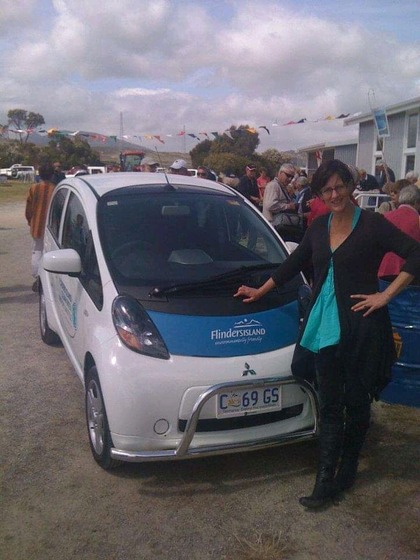
I’ve had to do electrical repairs on this vehicle because of its age and battery degredation, which has taught me more about electric vehicle components such as inverters and batteries.
When I got involved with the Launceston & North East Railway group, they had just erected a shed using grant funding from Tasmanian Liberal MP Bridget Archer. They received another grant from the Tasmanian Men’s Shed Association to add off-grid power to the site. Knowing a bit about the topic, I designed a system for their requirements.
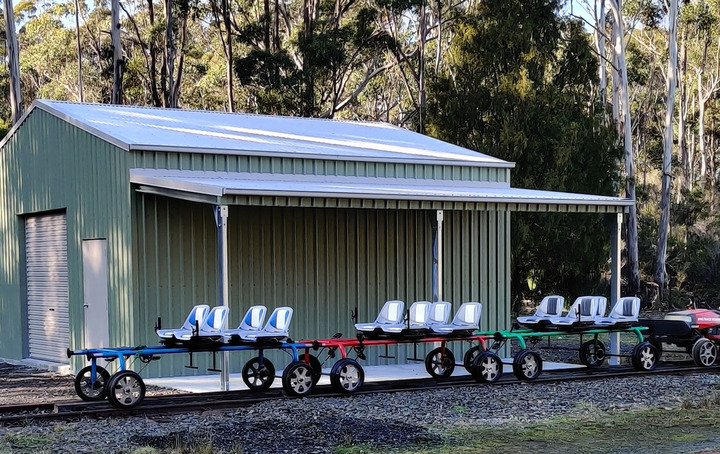
The requirements were pretty simple. The ability to charge a roughly 20kWh electric train overnight and enough power to run the average 2.4kW power tool during the day. So we’re only looking for roughly a 5kW discharge capacity.
The group had already found some very cheap lithium nickel manganese cobalt oxide battery cells (LG E63B) at a local metal recycler. Most off-grid systems work with 12V, 24V or 48V batteries. It is possible to go higher but regulations in Australia make it easiest to stay below 60V, for safety reasons. Most lithium-ion batteries have an maximum voltage of 4.2V per cell, so 14 cells in series works really well, giving 58.8V at maximum charge. Having 14 cells in series also gives a voltage range which works with most hardware designed for 48V batteries.
Victron makes a few models of combined inverter/chargers. After comparing the range, I noticed the Multi RS Solar which had a power rating of 6kVA, with two independent solar MPPT inputs. I had prior experience with the JK brand of BMS and I knew it was possible to somehow integrate it into a Victron system.
I came up with the following diagram and sent it to the group:
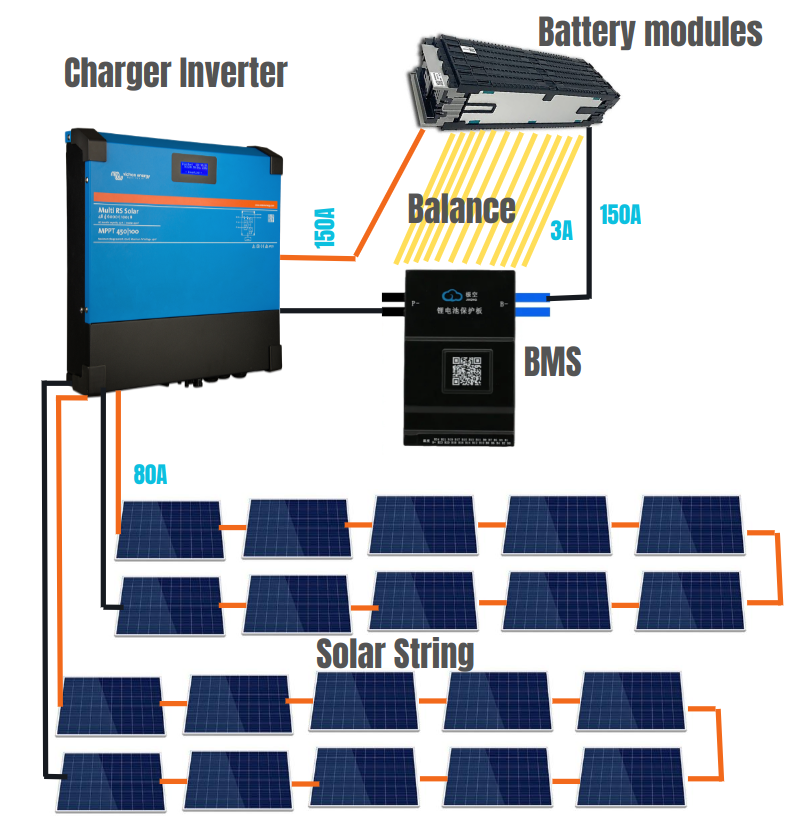
In the end, we ordered the following parts:
- Victron Multi RS Solar 48/6000/100-450/100 2 Tracker
- Victron Ekrano GX
- JK BMS 8S-20S 100A BD6A20S10P
- 12x Suntech 415W solar panels
The cells are put together into 14S3P batteries. We had so many cells that we made 8 batteries - almost 80kWh of storage! But we decided to only wire in a single battery to start off with. The solar panels are split into two 6-panel strings. We have two electricians in the group who were able to handle the solar panels and 240V AC wiring. Random bits of wiring and breakers were donated by members.
The Ekrano GX runs Venus OS and controls the inverter and batteries. I installed dbus-serialbattery on the device and plugged in a USB to RS485 adapter. The RS485 is wired to a port on the JK BMS. This allows the controller to change discharging/charging speeds depending on BMS state. I decided to go for a conservative configuration at first and came up with:
MIN_CELL_VOLTAGE = 3.200
MAX_CELL_VOLTAGE = 4.00
FLOAT_CELL_VOLTAGE = 3.975
SOC_RESET_VOLTAGE = 4.200
CELL_VOLTAGES_WHILE_CHARGING = 4.20, 4.10, 4.00, 3.90
CELL_VOLTAGES_WHILE_DISCHARGING = 3.20, 3.30, 3.40, 3.50
BMS_TYPE = Jkbms
BATTERY_CAPACITY = 180There’s a flaky network connection, which allows us to remotely monitor the system using Victron’s VRM portal. For example, the shed is only running a fridge and security system most days, so it only discharges to 85% state of charge overnight and quickly gets back to full when the sun comes out:
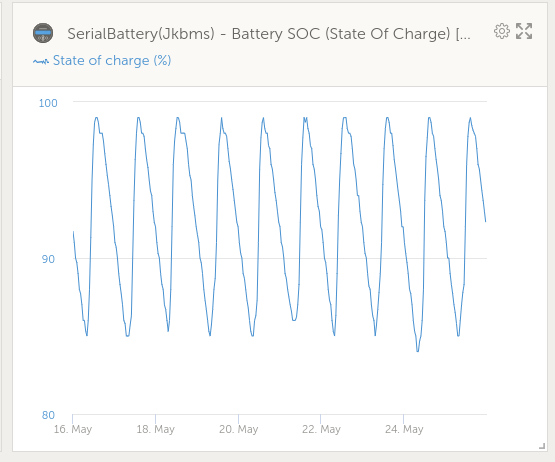
Here’s a photo of the functional but unfinished installation:
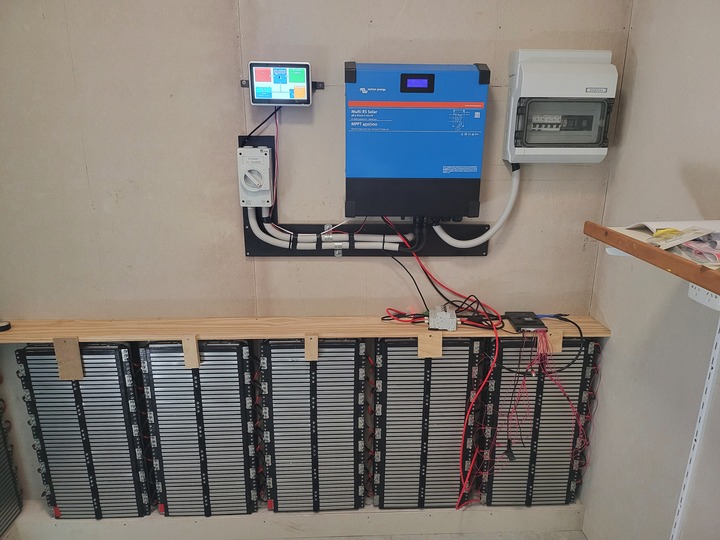
It has been running pretty much like this since the end of March. I’m amazed by how stable everything is. Obviously, it’s underutilised and overkill at the moment, so if you have an electric vehicle charger, hydrogen electrolyser, or NixOS build farm to donate, please do!
This should be the first off-grid men’s shed in Tasmania. The group has workdays most Saturdays, and you’d be welcome to take a look.